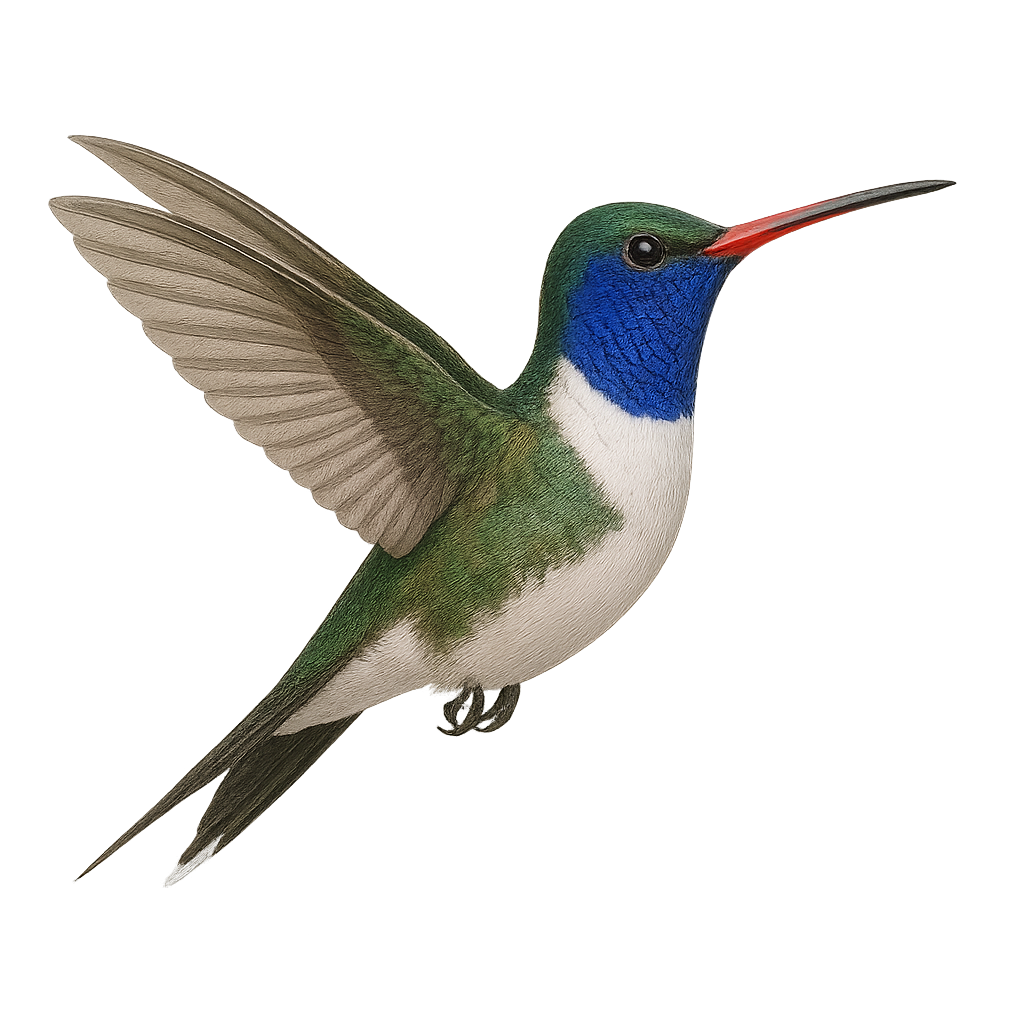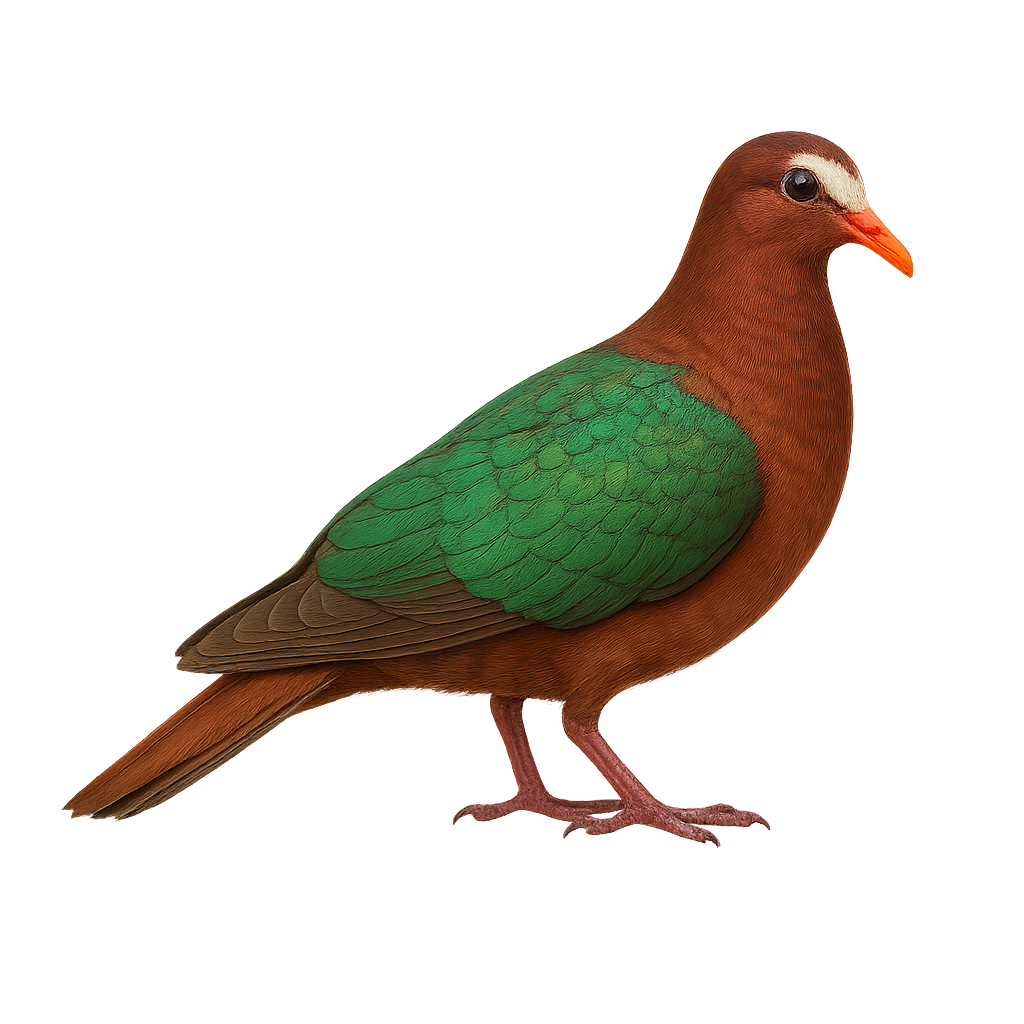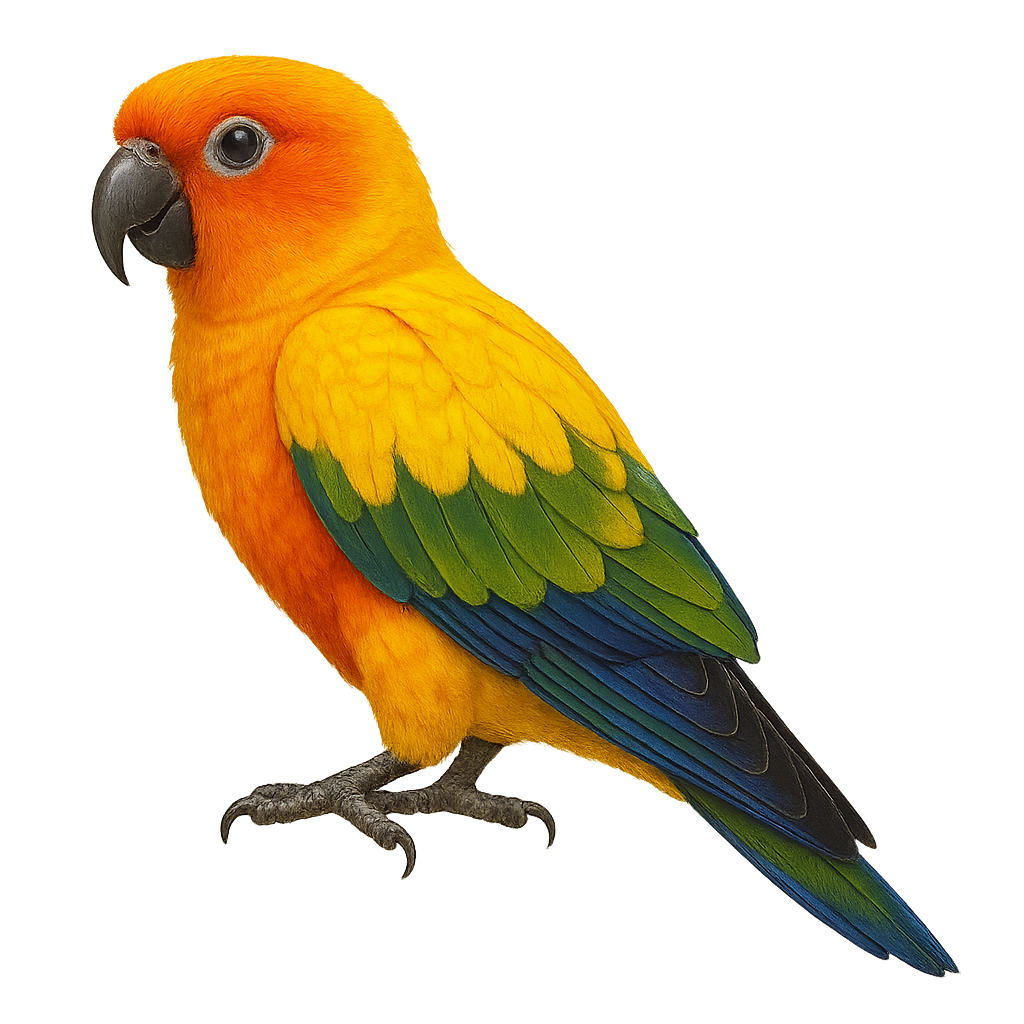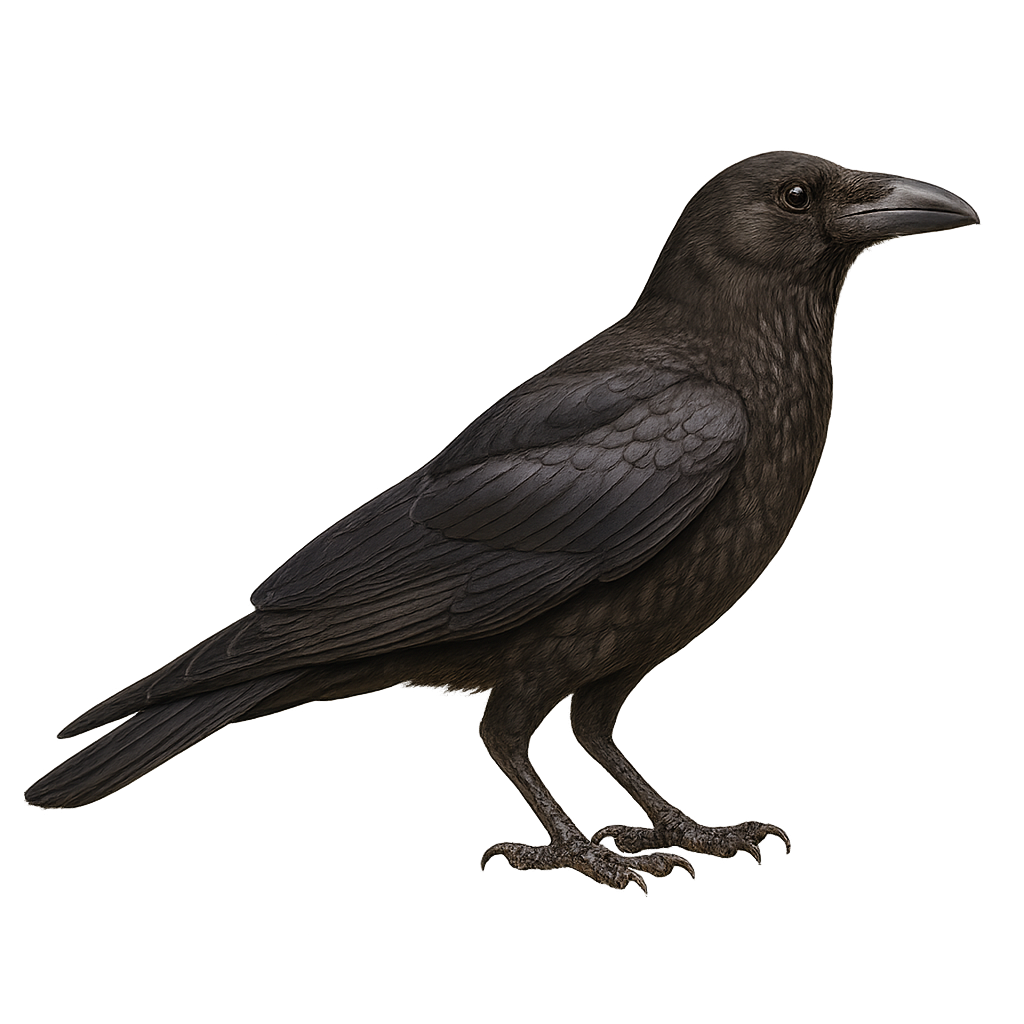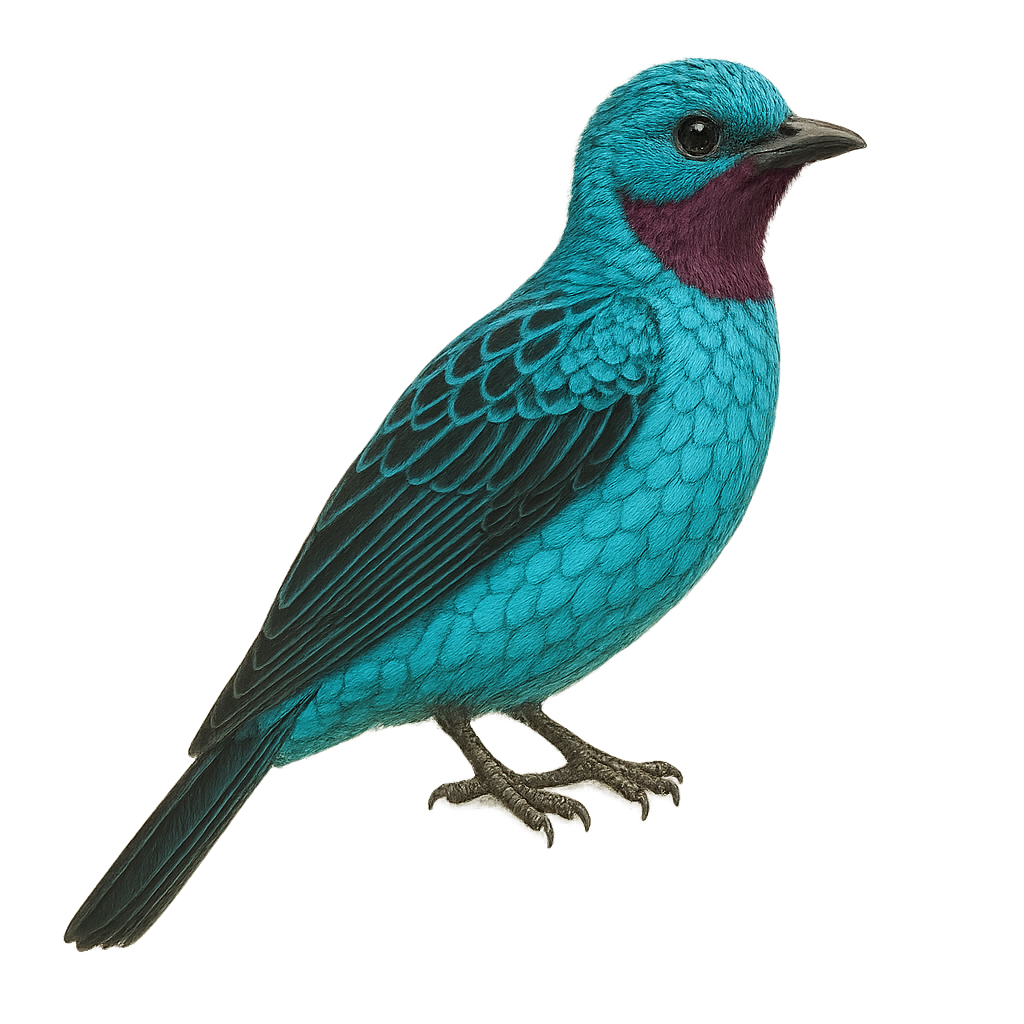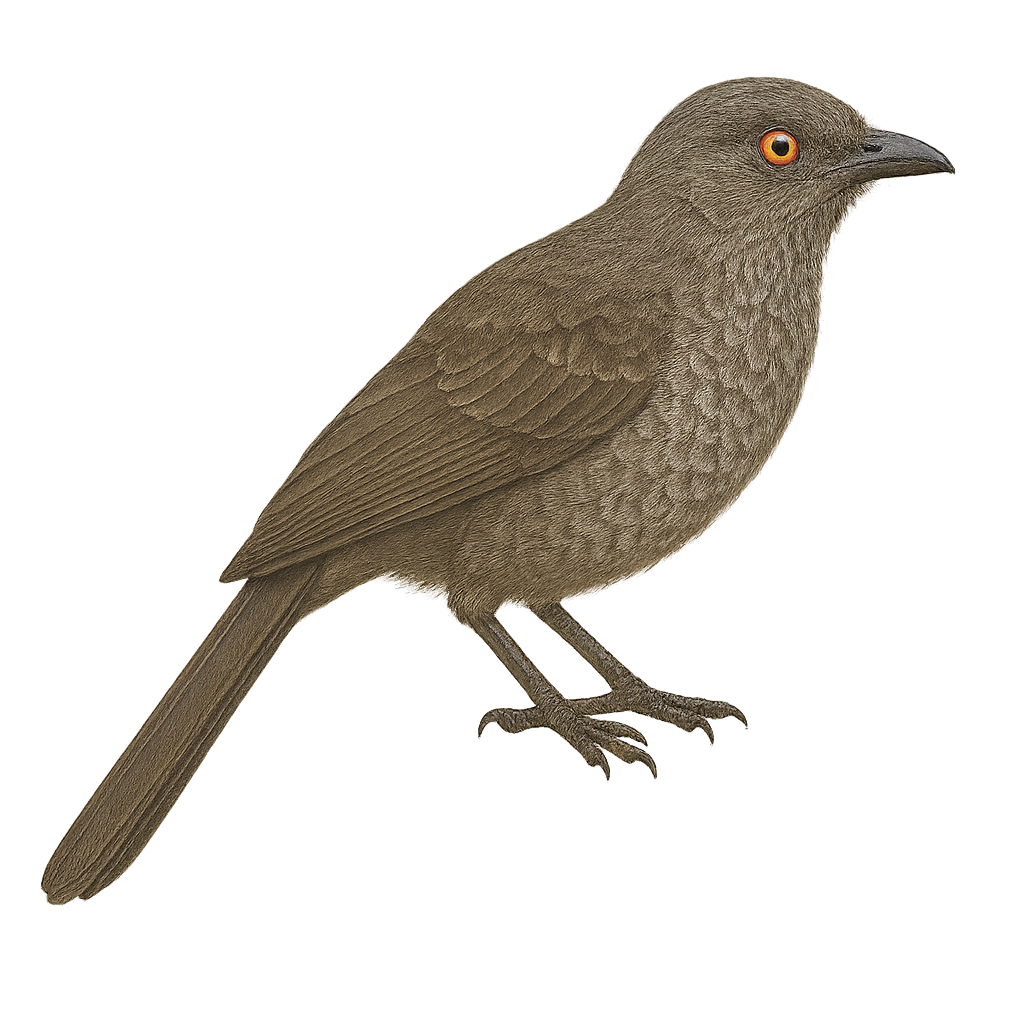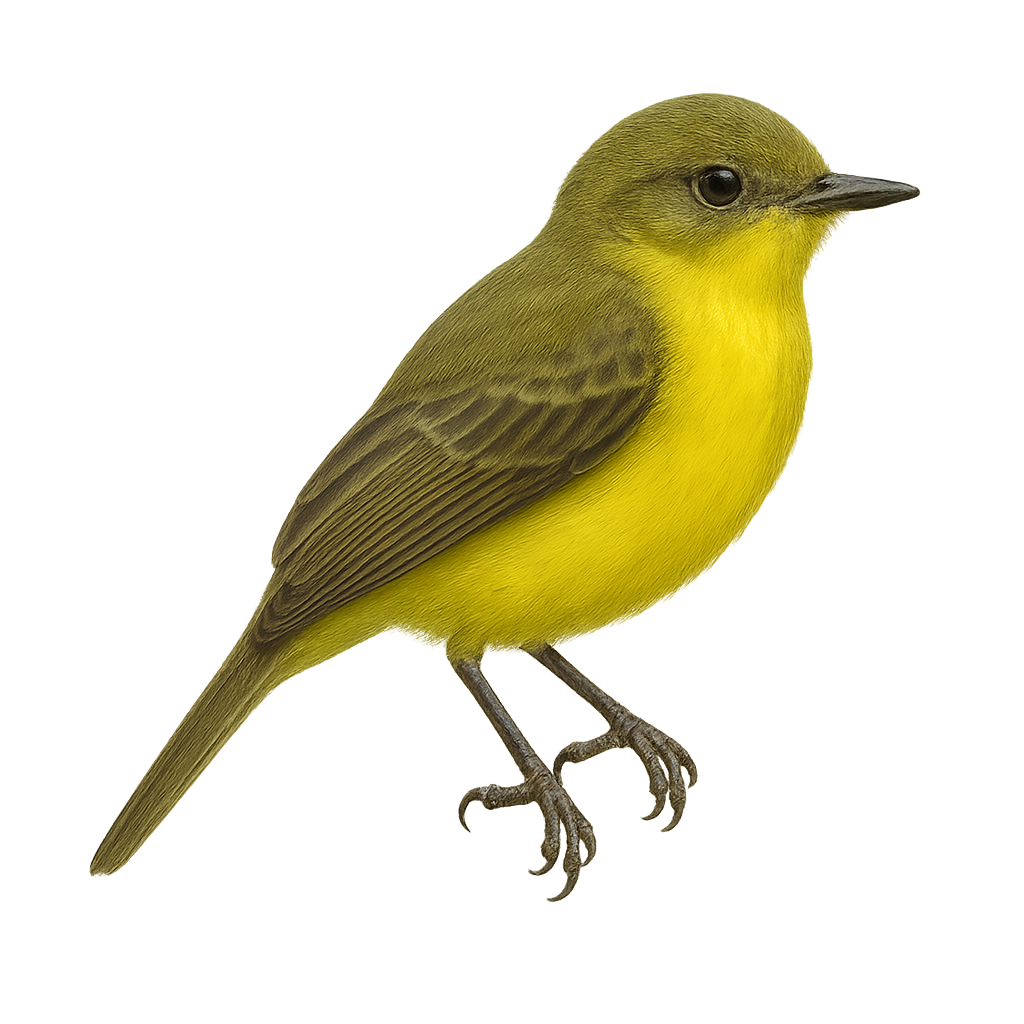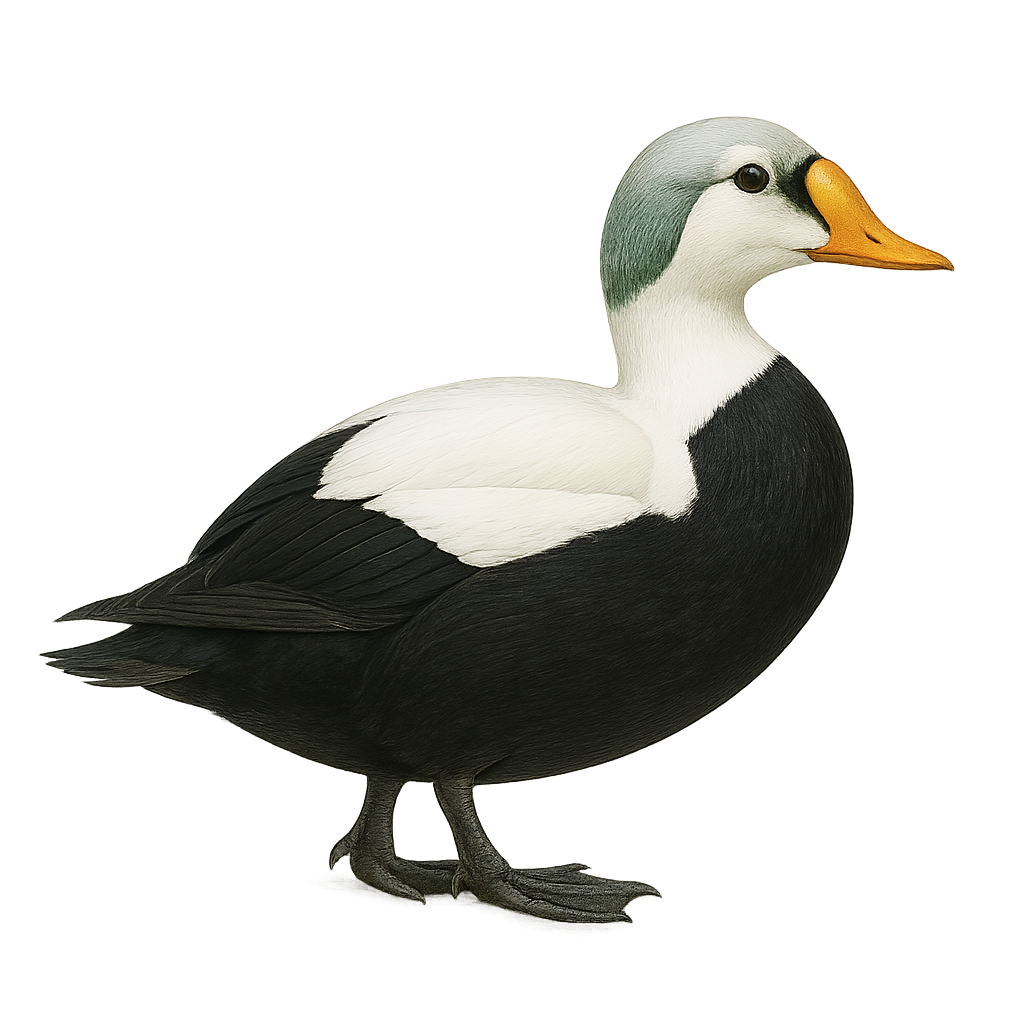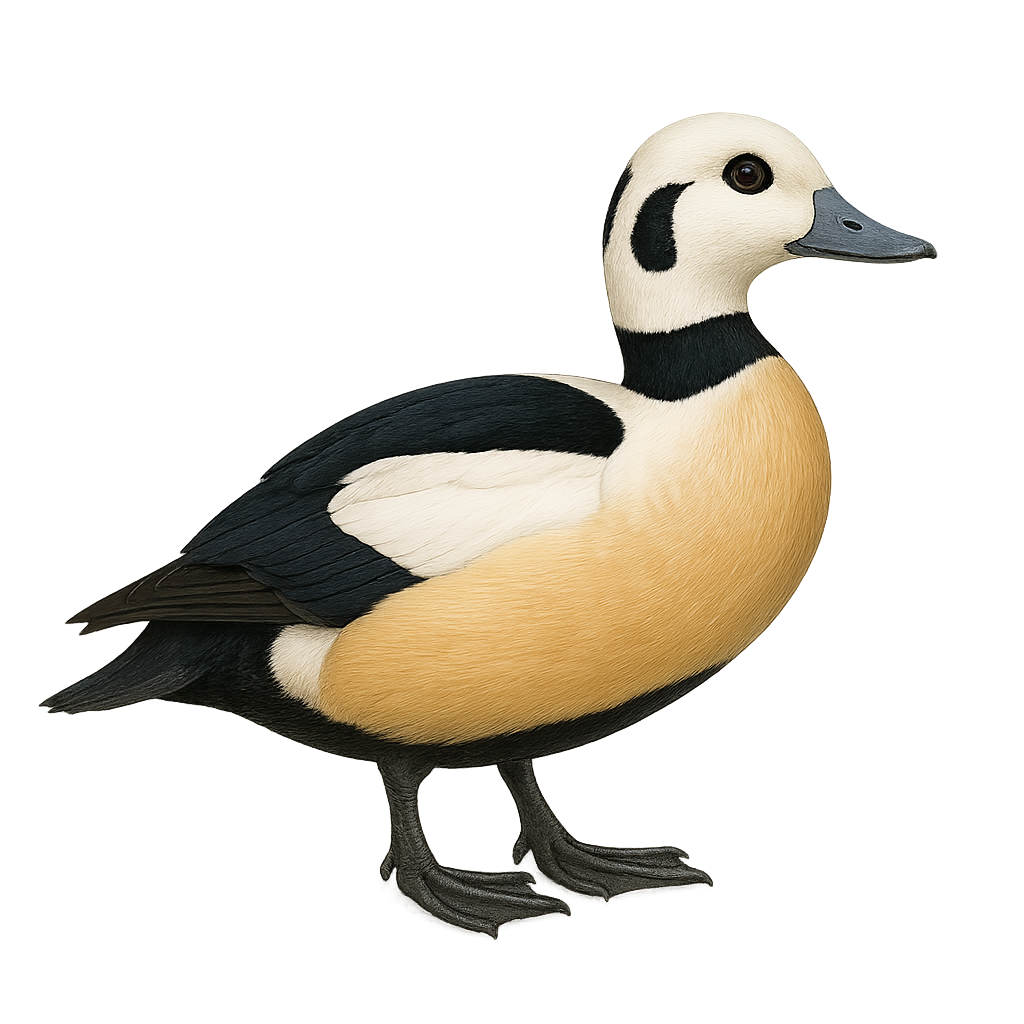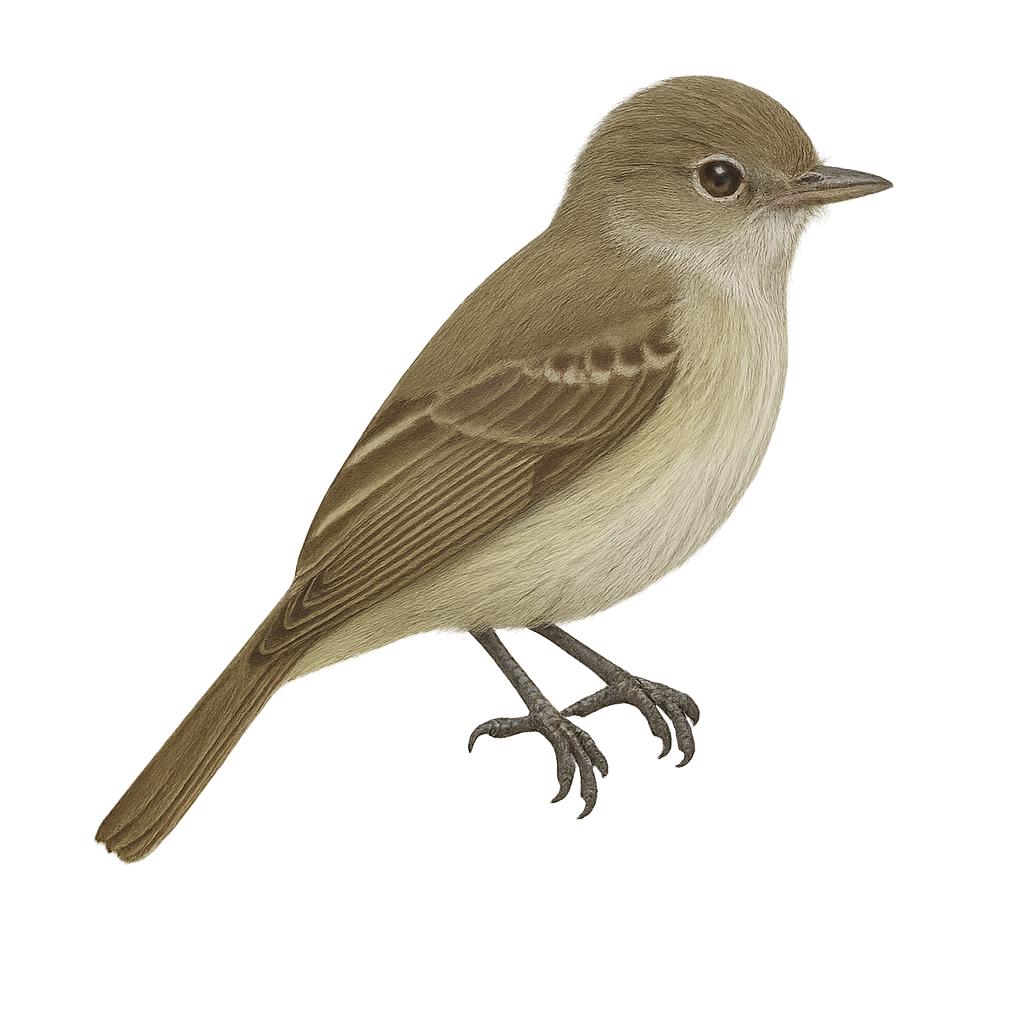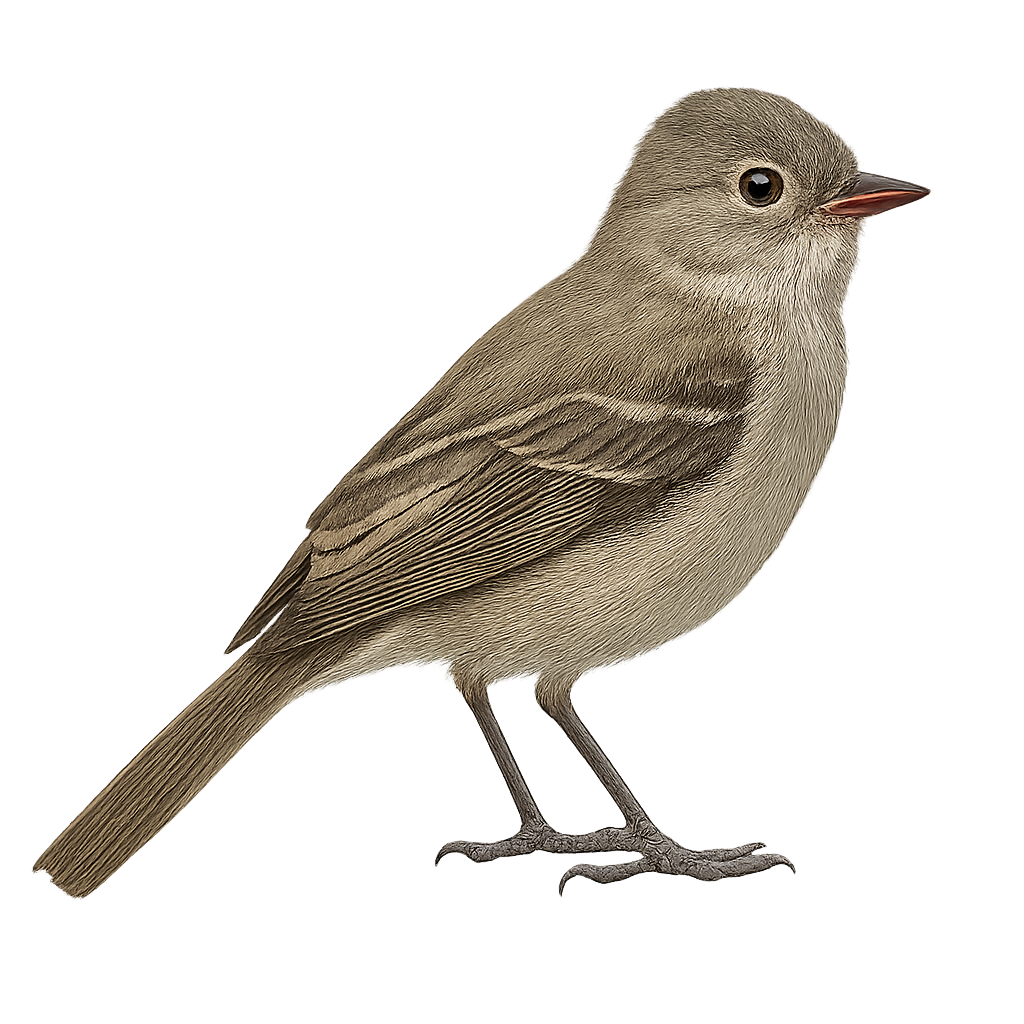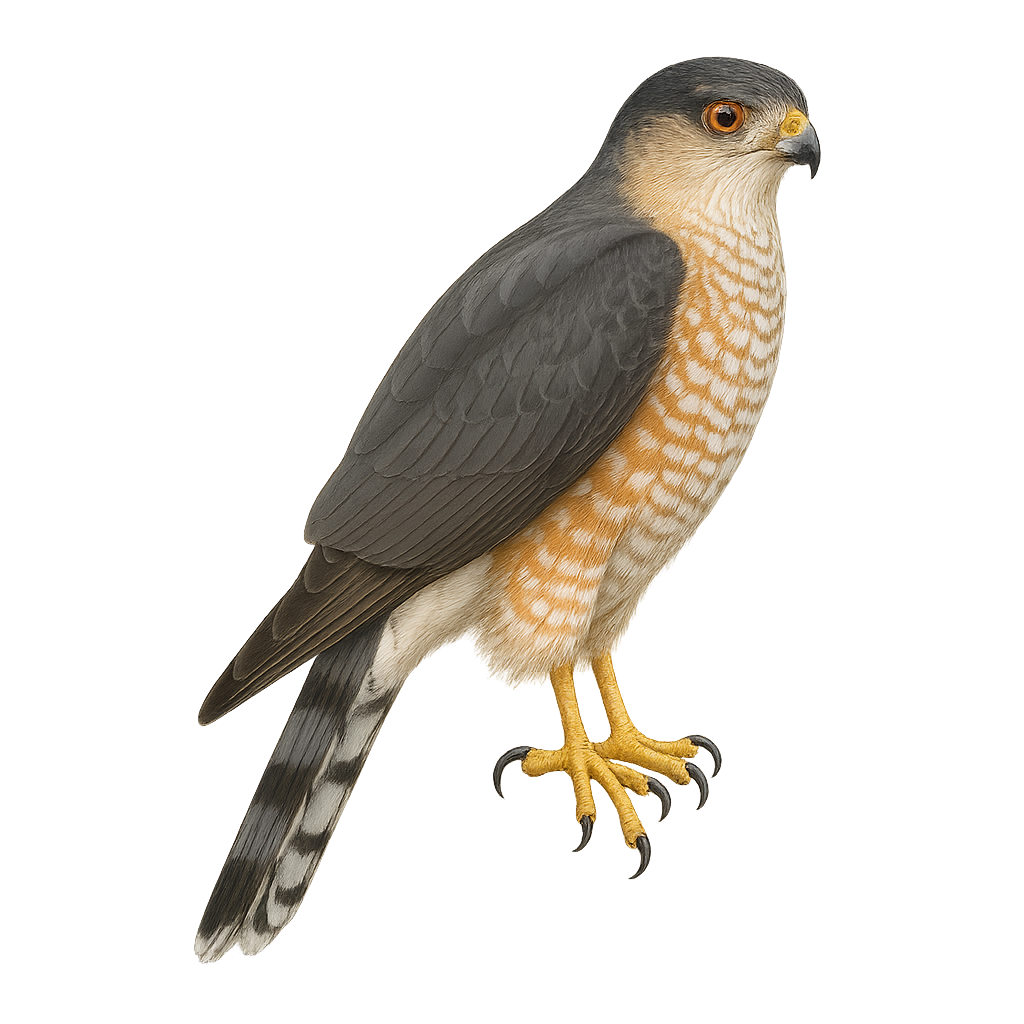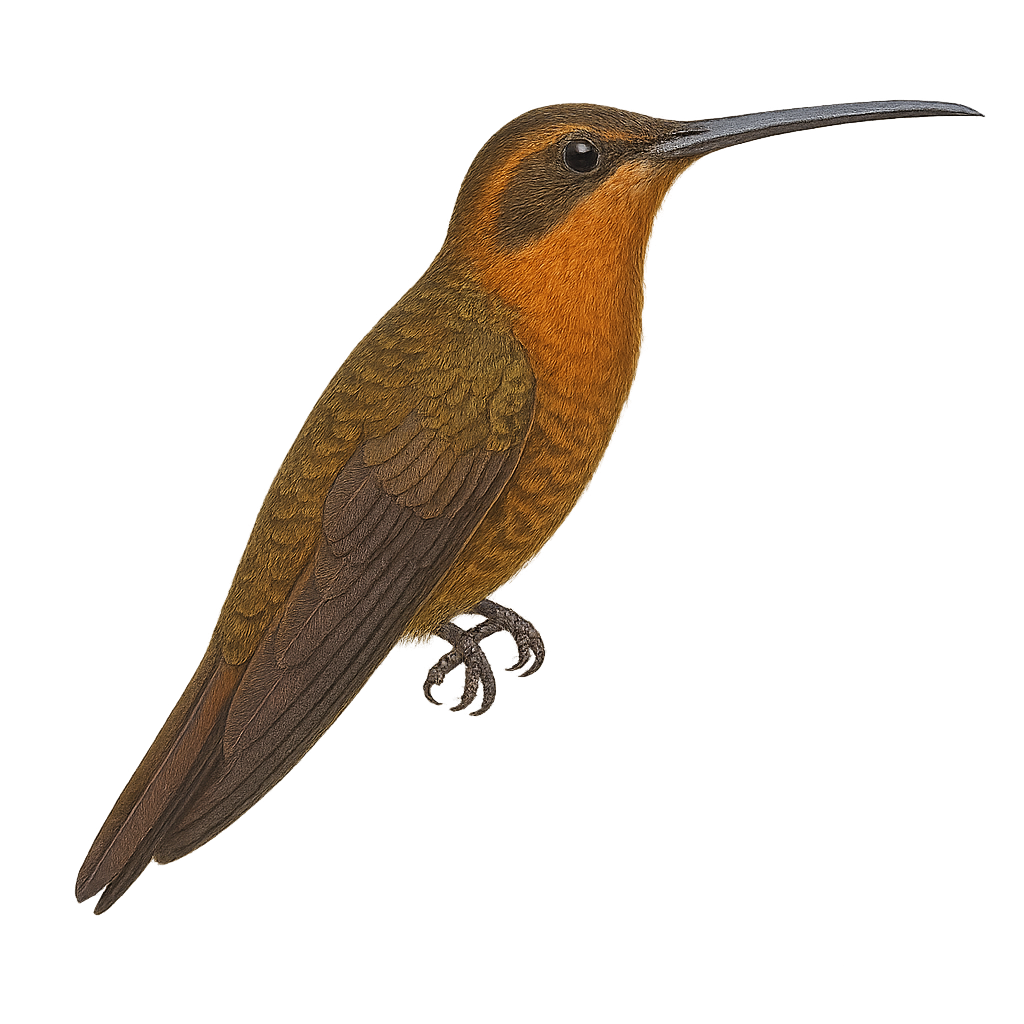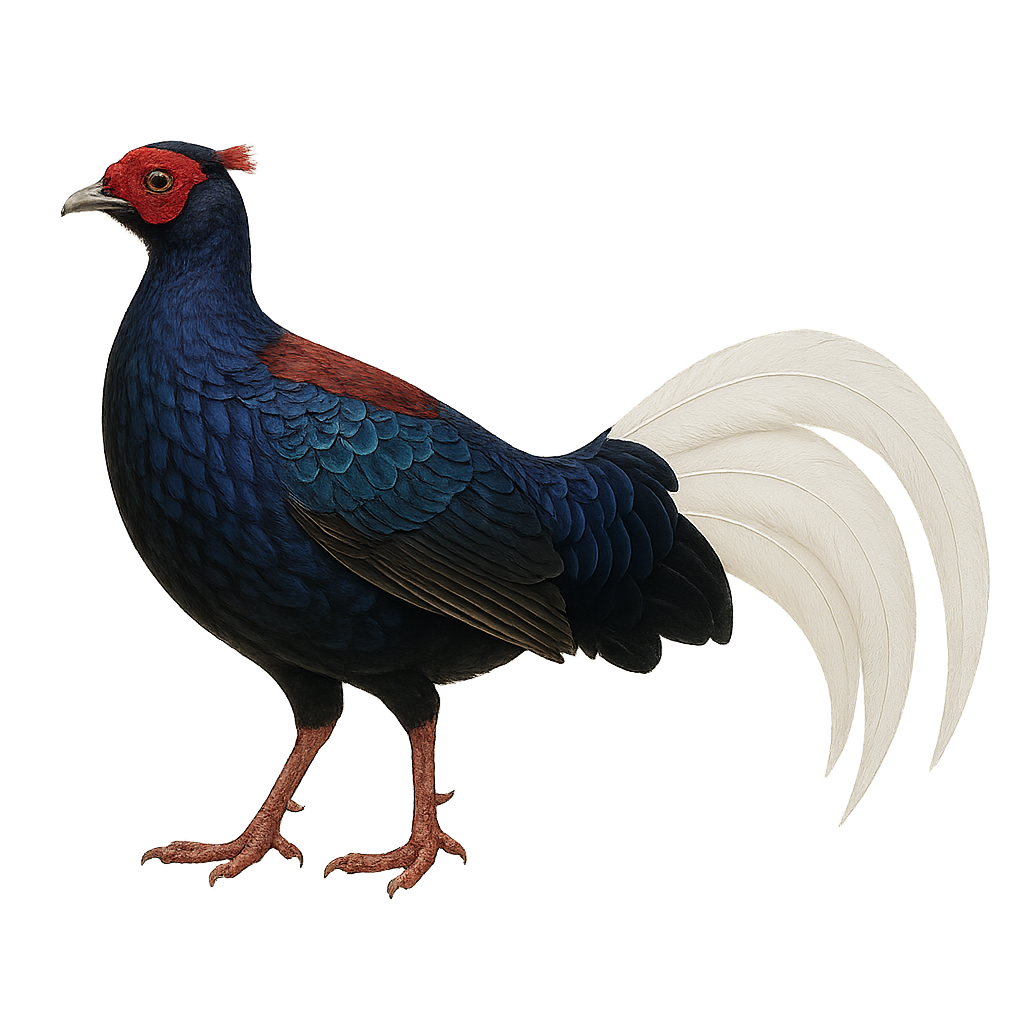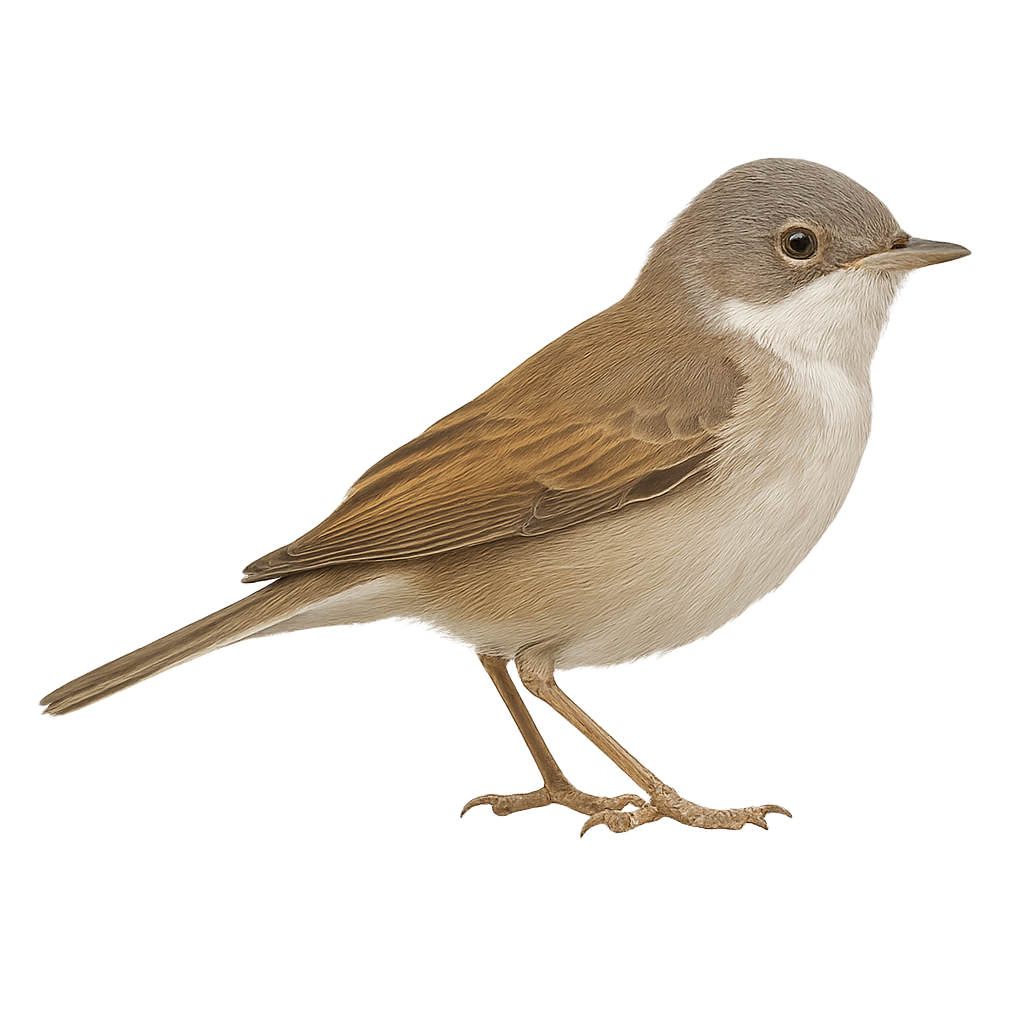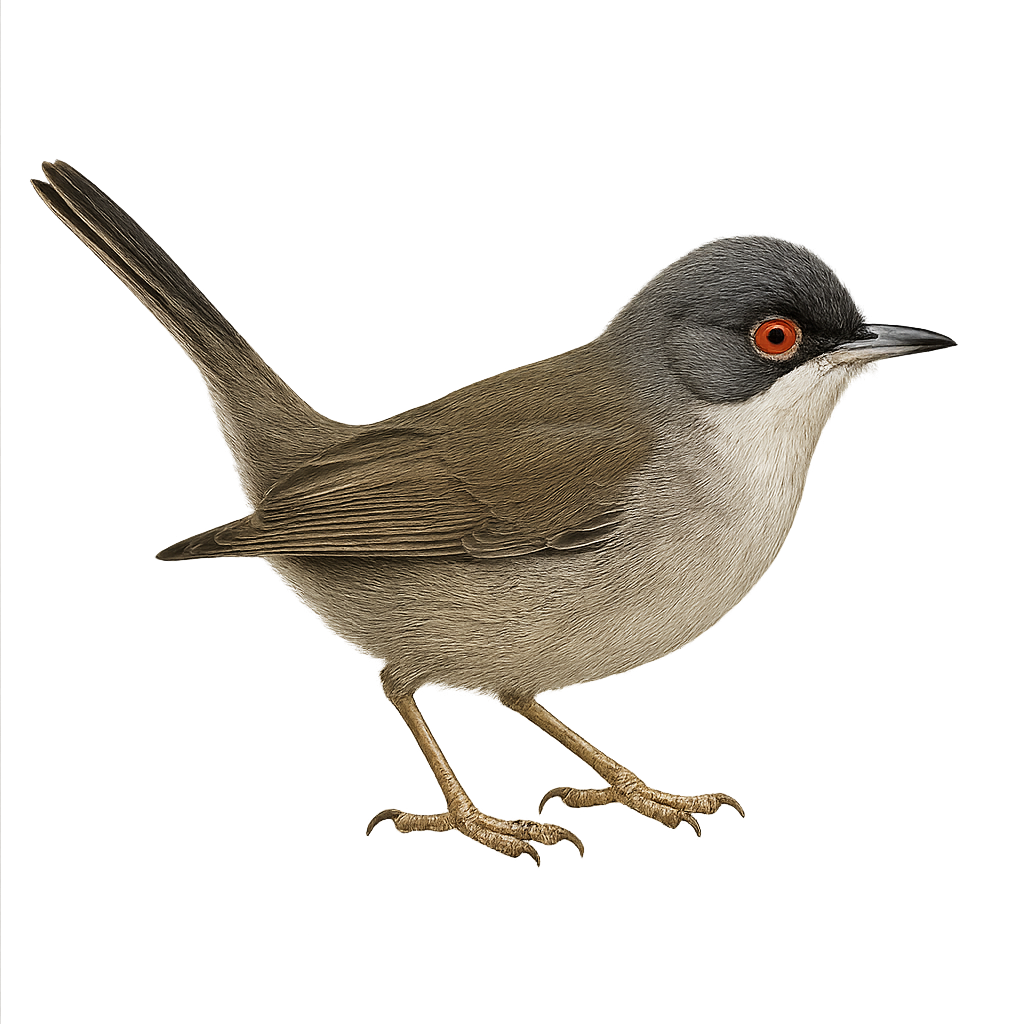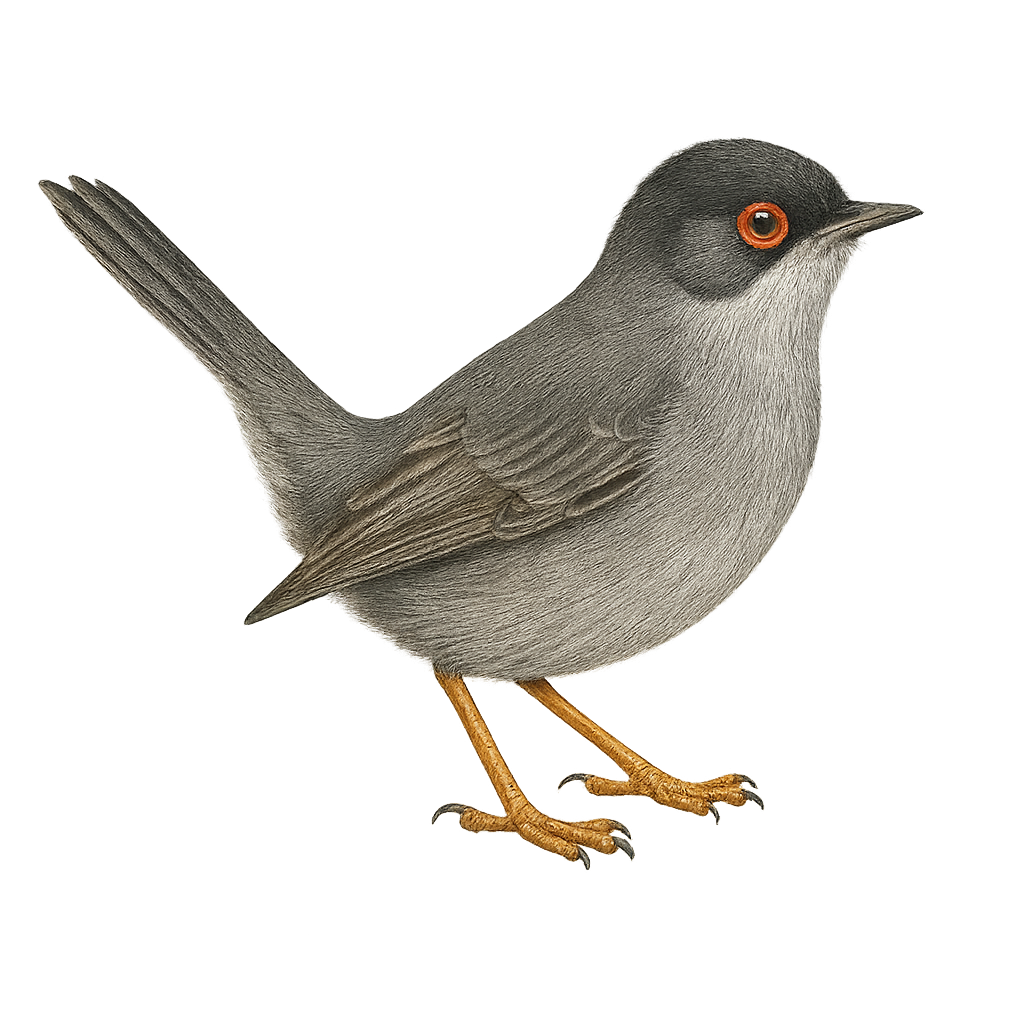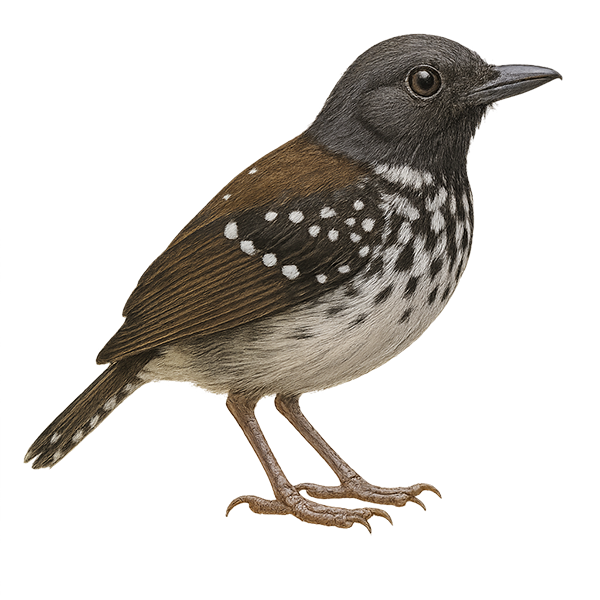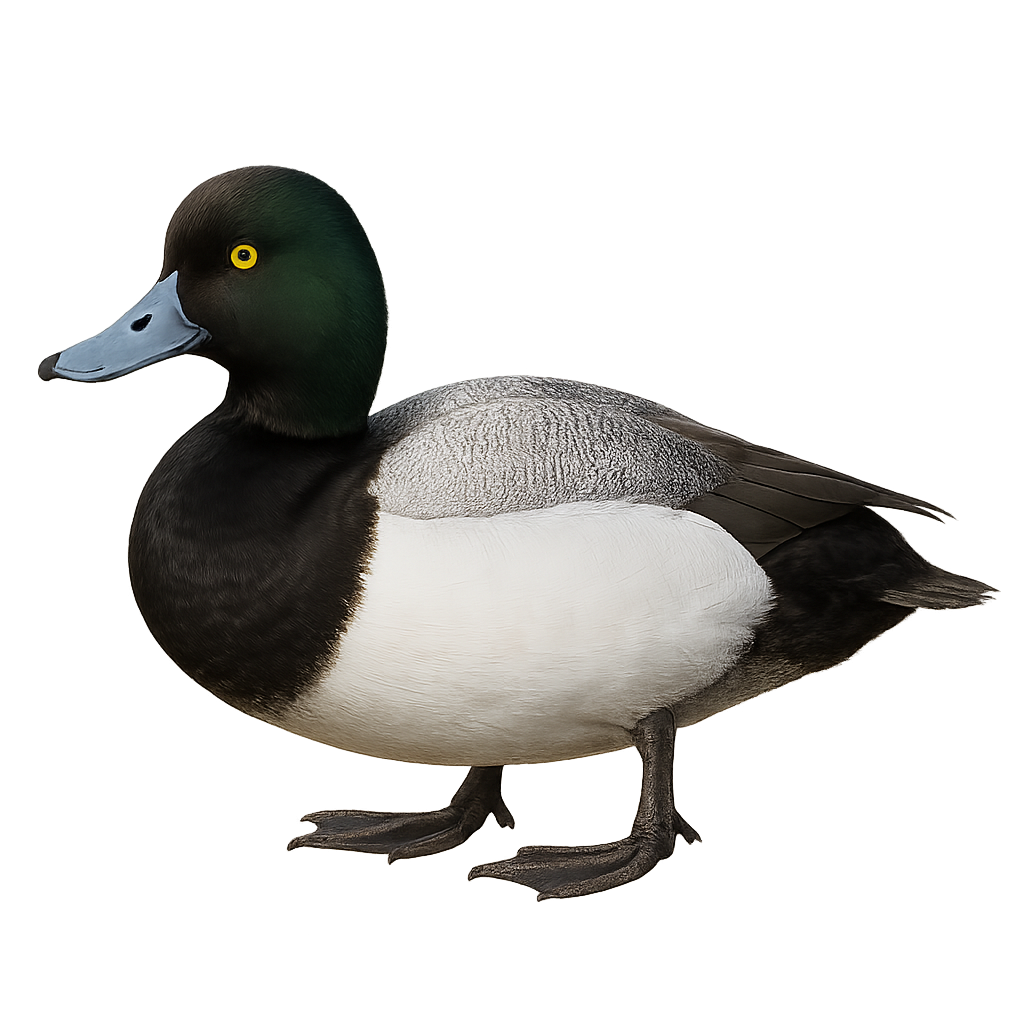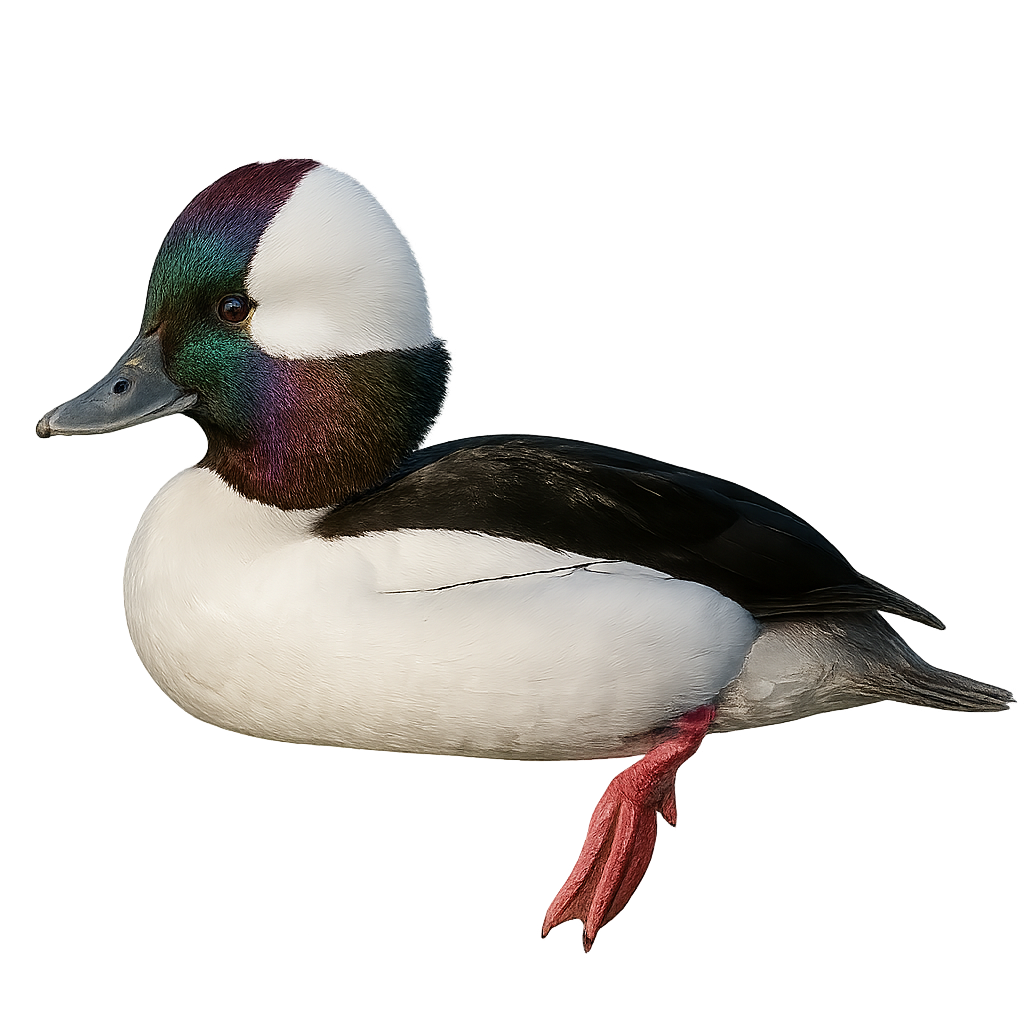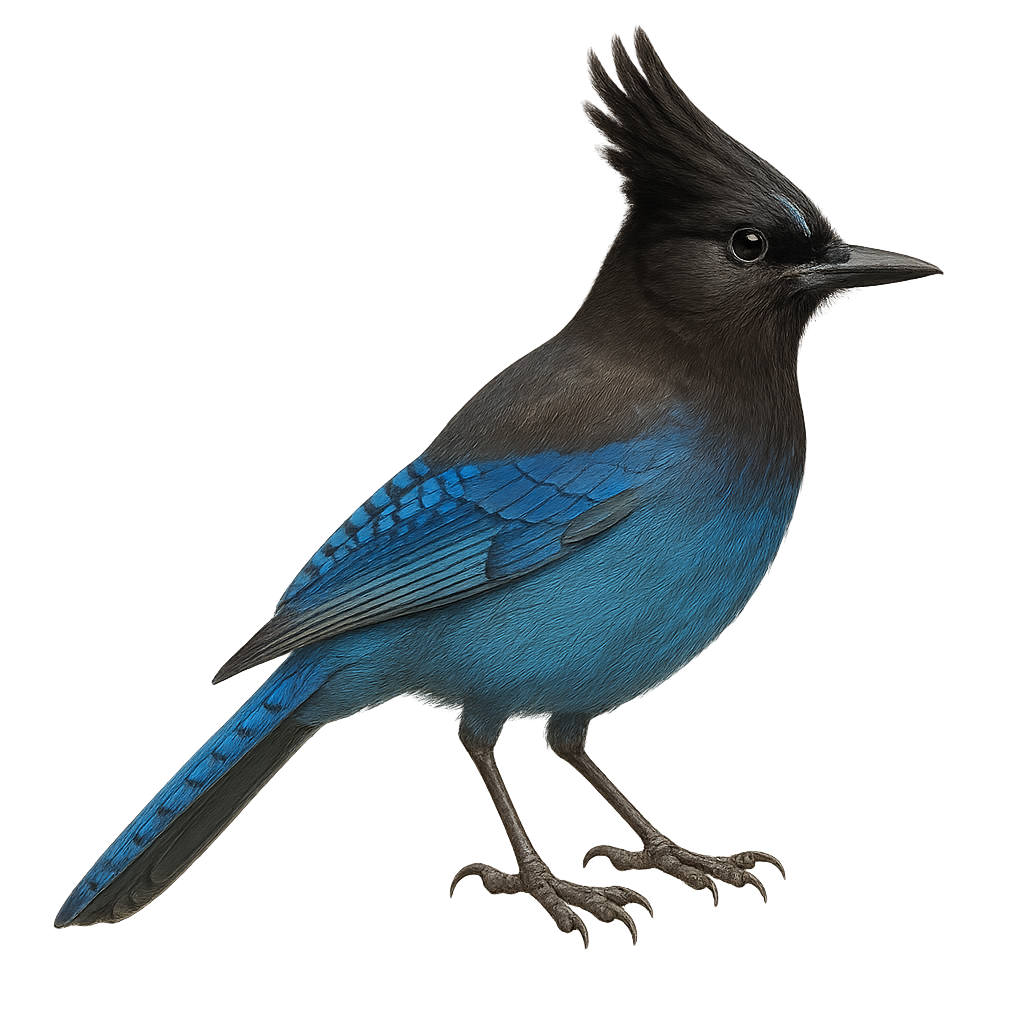The Sparkling-tailed Hummingbird, or Tilmatura dupontii, is a captivating bird belonging to the Trochilidae family. This small hummingbird is notable for its sparkling tail and vibrant colors, ranging from emerald green to deep blue. It is primarily found in the tropical and subtropical forests of Mexico and Central America. This hummingbird is an essential pollinator, feeding mainly on flower nectar, but it also consumes small insects to supplement its diet. Its fast and agile flight allows it to maneuver easily between flowers and escape predators. Although its conservation status is not of concern, deforestation and habitat loss pose potential threats to its population.
The Stephens's Emerald Dove, or Chalcophaps stephani, is a medium-sized pigeon known for its striking plumage with shades of emerald green. It primarily inhabits the tropical rainforests of Southeast Asia and Australia. Its bright red beak and pink legs contrast with its green and brown body, creating a stunning visual display. Often seen alone or in small groups, it feeds on seeds and fallen fruits. Although its flight is fast and direct, it prefers to walk on the forest floor in search of food. This species is generally discreet, blending into its environment with its camouflaged plumage.
The Sun Conure, or Aratinga solstitialis, is a medium-sized parrot renowned for its vibrant plumage. Native to South America, primarily northeastern Brazil, it displays bright colors ranging from golden yellow to orange, with green touches on its wings and back. This parrot is highly social, living in groups in tropical forests, savannas, and wooded areas. Known for its loud call and ability to mimic sounds, the Sun Conure faces threats from deforestation and the illegal pet trade. It is listed as an endangered species by the IUCN.
The Sri Lanka Junglefowl, Gallus lafayettii, is a pheasant species endemic to Sri Lanka. It is known for its vibrant plumage, featuring shades of red, orange, and yellow, and a bright red comb. Males have a long, arched tail, while females are more subdued with brownish feathers. These birds prefer dense forests and wooded areas, feeding on seeds, insects, and small invertebrates. Although primarily ground-dwelling, they can fly short distances to evade predators. Their distinctive call is often heard at dawn and dusk.
The Somali Crow, scientifically known as Corvus edithae, is a bird endemic to the arid regions of the Horn of Africa. It is distinguished by its glossy black plumage and robust beak. Measuring about 46 cm in length, it is often mistaken for other crows but can be identified by its slightly smaller size and distinctive call. This crow is omnivorous, feeding on fruits, insects, and small animals. It is often seen in small groups, exploring savannas and semi-desert areas. Although relatively common in its habitat, monitoring its status is essential due to environmental changes that may affect its population.
The Spotted Shag, or Phalacrocorax punctatus, is a marine bird endemic to New Zealand. It is notable for its unique plumage, with spotted patterns on its back and wings, and a lighter shade on its belly. During the breeding season, it sports a distinctive crest on its head. This cormorant is often seen along rocky coastlines, where it primarily feeds on fish and small marine invertebrates. It skillfully dives to catch its prey, using its wings to propel itself underwater. Although relatively common in its natural habitat, it remains sensitive to human disturbances and marine pollution.
The Southern Antpipit is a small, elusive bird found primarily in the humid forests of South America, particularly in Brazil and Argentina. Its plumage is mainly brown with lighter shades on the belly, allowing it to blend seamlessly into its surroundings. It is often seen foraging for insects on the forest floor, moving nimbly among the leaf litter. Although not very shy, it remains cautious around humans and prefers undisturbed areas. Its song is a gentle whistle, often heard at dawn and dusk.
The Spangled Cotinga is a striking bird known for its vibrant plumage and elusive presence in the tropical forests of South America. Males display bright blue feathers with a purple throat, while females are more subdued with brownish tones. This bird is often seen perched high in the canopy, feeding primarily on fruits. Its song is infrequent but distinctive, aiding in its identification. The Spangled Cotinga plays a crucial role in seed dispersal, thus supporting forest regeneration. Although its habitat is threatened by deforestation, it is currently listed as of least concern by the IUCN.
The Squacco Heron is a small heron, easily recognizable by its head adorned with long white feathers that form a sort of mane, which gives it its name. Its plumage is primarily beige and white, with brown or gray shades on the wings and back, and a short, thick beak. This heron measures about 45 cm in length, with a wingspan of approximately 80 cm. It is often observed in wetland areas such as marshes, riverbanks, and ponds, where it primarily hunts small fish, aquatic insects, and crustaceans.
The Squacco Heron is a migratory bird found primarily in the Mediterranean regions, but its population is declining due to habitat loss and water pollution. Although it is a rather discreet and solitary bird, it can sometimes be seen in small groups during the breeding season. This heron has a characteristic hunting behavior, walking slowly in shallow water where it probes the ground with its beak.
The Scaly Babbler, or Turdoides squamulatus, is a medium-sized bird known for its brownish plumage with distinctive scaly patterns on the chest and back. Often seen in noisy groups, they move through the underbrush and savannas of sub-Saharan Africa. These birds are known for their complex social behavior and varied vocalizations. They primarily feed on insects, small invertebrates, and occasionally fruits. Their preferred habitat includes shrublands and open forests. Although they are quite widespread, observing them may require patience due to their wary nature and habit of hiding in dense vegetation.
The Sharp-winged Tyrannulet is a small passerine bird from the Tyrannidae family, known for its pointed wings and subtle plumage. It primarily inhabits wetlands and marshes in South America, especially in Argentina, Paraguay, and Uruguay. Its song is melodious, although it is often hard to spot due to its small size and discreet behavior. It mainly feeds on insects, catching them in flight or on leaves. The breeding season varies by region but typically occurs in spring. Nests are often built in low shrubs, hidden from predators.
The Sclater's Tyrannulet is a small passerine bird belonging to the Tyrannidae family. It is primarily found in the wetlands and marshes of South America, particularly in Argentina, Bolivia, and Paraguay. This bird is characterized by its olive-brown plumage, with lighter shades on the belly and slightly striped wings. Its modest size and discreet behavior sometimes make it difficult to spot. It primarily feeds on insects, which it catches in flight or on vegetation. The Sclater's Tyrannulet is known for its melodious songs, often heard at dawn. Although not considered threatened, habitat degradation could pose long-term risks.
The Spectacled Eider (Somateria fischeri) is a striking sea duck found in Arctic regions, especially along the coasts of Alaska and eastern Siberia. This medium-sized duck is named for the distinctive black "spectacle" markings around the male's eyes, set against a pale cream head, with a greenish nape and bright orange bill. The female is more subdued in appearance, with a uniform brown plumage that blends well into coastal surroundings. Spectacled Eiders are typically seen in small groups, diving in shallow waters for mollusks, crustaceans, and sea urchins. Though rare and considered vulnerable, this unique bird captivates those lucky enough to spot it in the wild.
The Steller's Eider is a distinctive sea duck known for its striking plumage and migratory habits. Males display a striking breeding plumage with a white head, black eye patches, and a brown and black body. Females are more subdued, primarily brown, allowing them to blend into their natural habitat. These birds breed in the Arctic regions of Russia and Alaska, often nesting near lakes and rivers. In winter, they migrate to more temperate coasts, where they primarily feed on mollusks and crustaceans. The Steller's Eider is a vulnerable species, threatened by habitat loss and climate change.
The Small-billed Elaenia is a small passerine bird belonging to the Tyrannidae family. It is primarily found in South America, especially in wooded areas and savannas. This bird is characterized by its olive-gray plumage on the back and lighter underparts, as well as its relatively short bill, which gives it its name. Small-billed Elaenias are often seen feeding on insects and fruits, which they catch in flight or on branches. Their song is a key element of their communication, often described as a soft and melodious whistle. Although generally discreet, they can be observed in small groups or pairs.
The Small-billed Elaenia is a small passerine bird belonging to the Tyrannidae family. It is primarily found in the subtropical and tropical moist forests of South America, particularly in Brazil, Argentina, and Paraguay. This bird is characterized by its olive-gray back and white belly, which gives it its name. It has a relatively short bill and dark eyes. The Small-billed Elaenia is an active bird, often seen foraging for insects and fruits in the canopy. Its song is a key element for identification, consisting of a series of high-pitched, repetitive notes. Although not currently threatened, deforestation poses a potential risk to its natural habitat.
The Sharp-shinned Hawk, a small raptor from the Accipitridae family, is an agile and swift hunter often seen in the dense forests of North America. It is characterized by its modest size, short rounded wings, and long barred tail. Its plumage is typically blue-gray above and rufous-streaked below. This predator primarily feeds on small birds, capturing them in flight with its acrobatic flying skills. Although discreet, it is sometimes spotted during its seasonal migrations. The Sharp-shinned Hawk plays a crucial role in controlling smaller bird populations, thus contributing to the ecological balance of its habitat.
The Stripe-throated Hermit, or Phaethornis striigularis, is a small hummingbird native to the tropical rainforests of Central and South America. This tiny bird, measuring about 10 to 12 cm in length, is recognizable by its brown-green plumage and white-striped throat. It has a long, curved bill, perfect for feeding on the nectar of tubular flowers. Males and females look similar, although males often have slightly brighter colors. The Stripe-throated Hermit is a solitary bird, often seen darting quickly from flower to flower. It plays a crucial role in the pollination of tropical plants.
The Spot-backed Hermit, or Ramphodon naevius, is a fascinating hummingbird native to the humid tropical forests of southeastern Brazil. This small bird is distinguished by its brown-green plumage with white spots on its back, giving it a unique appearance. Its long, curved beak is perfectly adapted for feeding on the nectar of tubular flowers, a common trait among hummingbirds. The Spot-backed Hermit is often observed flying quickly from flower to flower, playing a crucial role in the pollination of local plants. Although primarily solitary, it can sometimes be seen in small groups during the breeding season. Its ability to adapt to different habitats, including secondary forests and gardens, makes it a resilient species despite deforestation threats.
The Spotless Starling is a medium-sized bird, measuring about 21 to 23 cm in length with a wingspan of 37 to 42 cm. Its plumage is predominantly black with metallic green and purple sheens, distinguishing it from the common starling. It is endemic to the Iberian Peninsula and northwest Africa. This bird is often seen in flocks, especially outside the breeding season. It inhabits various environments, including agricultural areas, urban parks, and open woodlands. Its diet is diverse, consisting of insects, fruits, and seeds. The Spotless Starling is known for its melodious song and ability to mimic other sounds.
The Southern Red Bishop, scientifically known as Euplectes orix, is a small passerine bird belonging to the Ploceidae family. It is easily identifiable by its striking plumage, particularly in breeding males, which display a vibrant red contrasted with black. Females and non-breeding males are duller, with brownish hues. This bird is primarily found in sub-Saharan Africa, frequenting marshes, wet grasslands, and cultivated areas. It is renowned for its spectacular courtship displays, where the male puffs up its feathers to attract females. The Southern Red Bishop primarily feeds on seeds, but also consumes insects, especially during the breeding season.
The Silver Pheasant, Lophura nycthemera, is an elegant and majestic bird native to the forests of Southeast Asia. It is easily recognizable by its silvery-white plumage in males, contrasting with its long tail and red legs. The female, more discreet, has brown plumage. These birds prefer dense, humid forests, where they feed on seeds, fruits, and insects. Their behavior is generally suspicious, but they can become accustomed to human presence in protected areas. The Silver Pheasant plays an important role in its ecosystem by dispersing seeds and controlling insect populations.
The Swinhoe's Pheasant, Lophura swinhoii, is an endemic species of pheasant found in Taiwan. This stunning bird is easily identifiable by its striking plumage: the male boasts a metallic blue coat with greenish hues, a long white tail, and red wattles around the eyes. The female is more subdued, with a primarily brown plumage and subtle patterns. This pheasant primarily inhabits the mountainous forests of the island, favoring dense and humid areas. It is often seen foraging on the ground, feeding mainly on seeds, fruits, and insects. Although its habitat is limited, it is relatively common in protected areas.
The Sardinian warbler is a small passerine bird found primarily in scrublands, maquis, and Mediterranean regions. It is easily recognized by its light gray plumage, brown back, and pale belly. This bird is primarily insectivorous, feeding on small prey such as insects and spiders, which it captures by rummaging through bushes and vegetation. It is also known for its melodious song and discreet movements in the underbrush.
The Sardinian Warbler, Sylvia melanocephala, is a small passerine bird belonging to the Sylviidae family. It is easily identified by the male's black cap, contrasting with its grey body and white underparts. The female has a brownish cap. This bird is mainly sedentary and is found in the Mediterranean basin, where it inhabits scrublands, garrigues, and bushy areas. The Sardinian Warbler is an active bird, often seen moving quickly through dense vegetation in search of insects and berries. Its song is a rapid, repetitive trill, often heard in spring. Although relatively discreet, it can be observed year-round in its natural habitat.
The Sardinian Warbler, or Sylvia sarda, is a small passerine bird belonging to the Sylviidae family. It is mainly found in Mediterranean regions, particularly in Corsica and Sardinia. This bird is characterized by its grayish plumage, with a black cap on males and a browner cap on females. Its song is melodious and varied, often heard in scrublands and garrigues where it hides among dense bushes. The Sardinian Warbler is a sedentary bird, although it may undertake small altitudinal migrations. It primarily feeds on insects and berries found in its natural habitat. Although its conservation status is currently stable, habitat degradation could pose a future threat.
The Spot-backed Antbird is a small bird from the Thamnophilidae family, primarily found in the humid tropical forests of South America. It is recognizable by its brown plumage with distinctive white spots on its back and wings. This bird is often seen in pairs or small groups, moving through the underbrush in search of insects and other small invertebrates. Known for its melodious and repetitive song, it resonates throughout the forest. Although relatively discreet, it can be spotted thanks to its characteristic calls. The Spot-backed Antbird plays an important role in the forest ecosystem by controlling insect populations and participating in seed dispersal.
The scaup is a diving duck found primarily in lakes, ponds, and wetlands across Europe, Asia, and North America. It is easily recognizable by its contrasting black and white plumage, blue-green beak, and rounded head. This duck primarily feeds on aquatic plants and small invertebrates, which it captures by diving underwater. During the breeding season, it builds its nest in aquatic vegetation or near the shores.
The smew is a small diving duck, 38–42 cm long, with the male’s striking black-and-white plumage and the female’s more subdued brownish tones. It inhabits lakes, ponds, and calm rivers with riparian vegetation in boreal and temperate regions. An expert diver, it feeds on small fish and aquatic invertebrates.
The Steller's Jay, with its striking blue plumage and distinctive black crest, is a fascinating bird of the coniferous forests of western North America. Measuring about 30 to 34 cm in length, it is distinguished by its black head and bright blue body. This bird is known for its bold and curious behavior, often seen foraging on the ground for food or skillfully flying between trees. Omnivorous, it feeds on seeds, fruits, insects, and even small animals. The Steller's Jay is also an excellent mimic, capable of reproducing the calls of other birds and even some human sounds.


